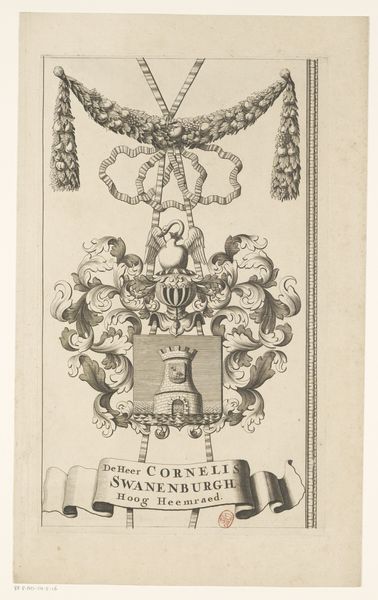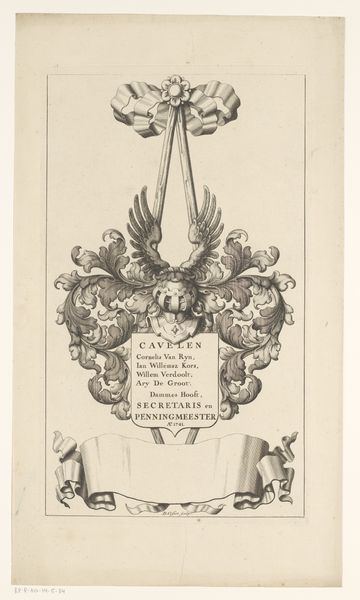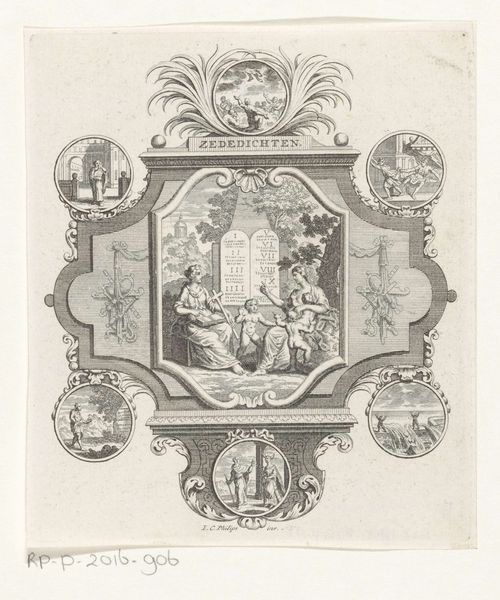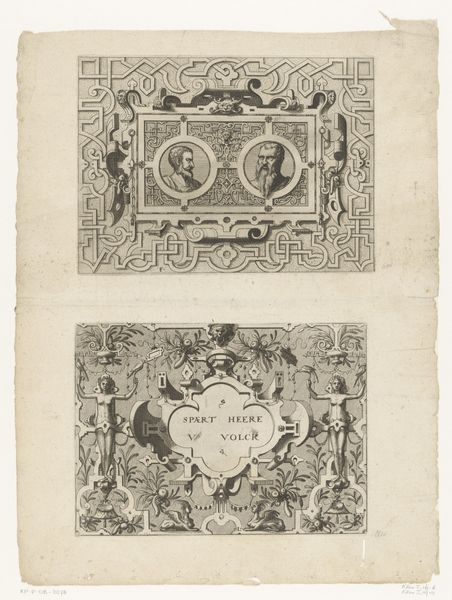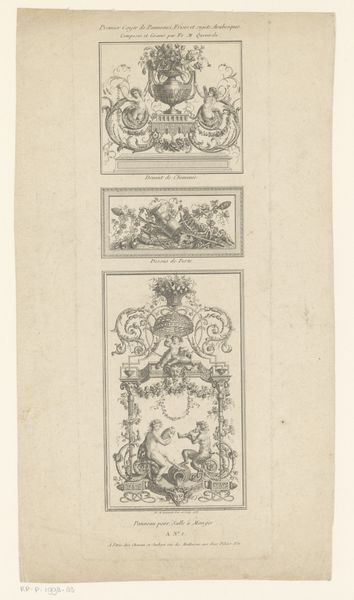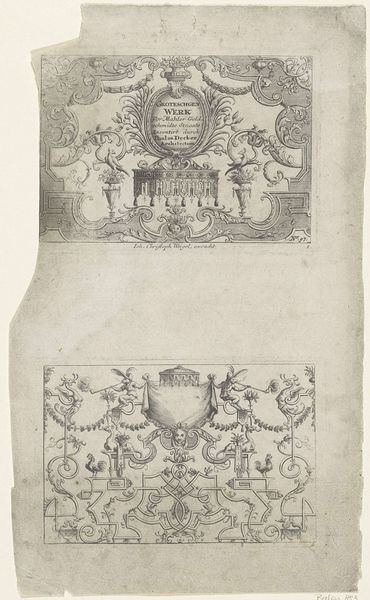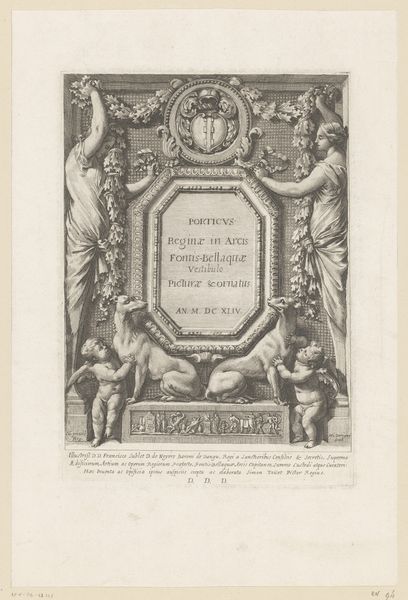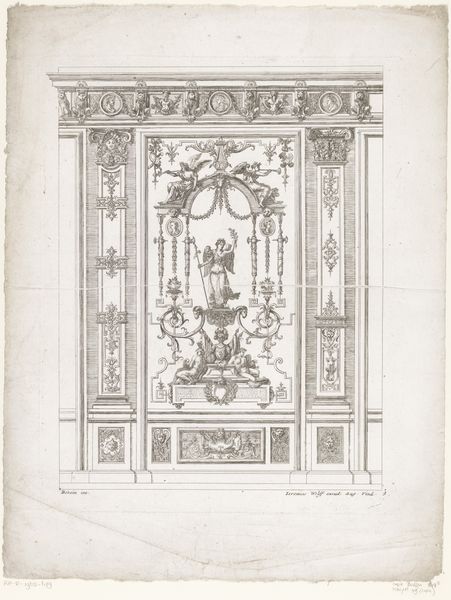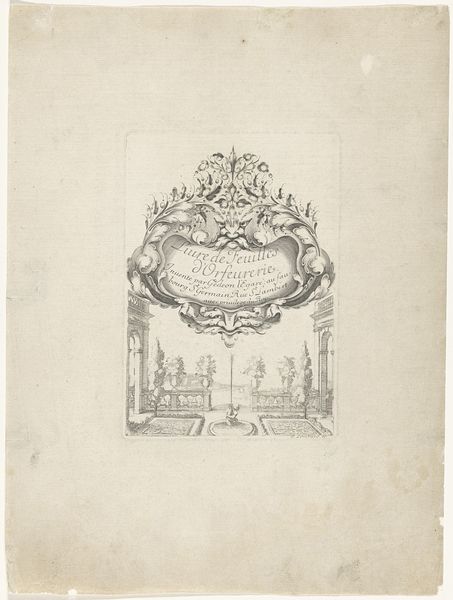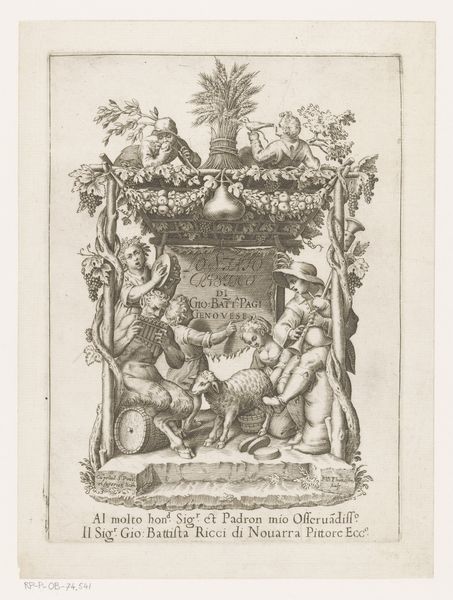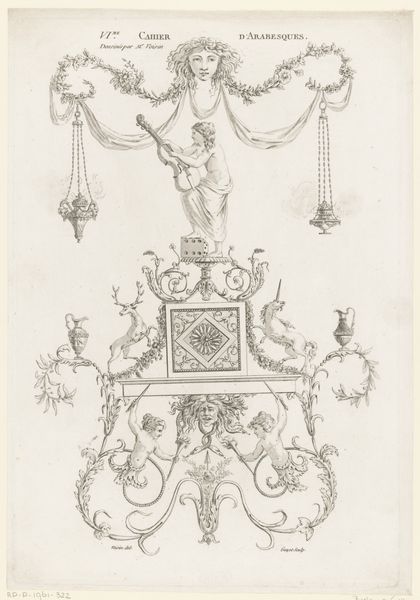
graphic-art, print, engraving
#
graphic-art
#
dutch-golden-age
# print
#
pen sketch
#
geometric
#
line
#
history-painting
#
decorative-art
#
engraving
Dimensions: height 532 mm, width 350 mm
Copyright: Rijks Museum: Open Domain
Curator: Let's discuss this intriguing print: "Blad voor sierrand bij een kaart van de Beemster," or "Sheet for Decorative Border of a Map of Beemster," dating back to 1685. It's an engraving. Editor: My first thought is just how opulent and decorative it is. All those swirly lines and the symmetrical shields. Very ornamental! Curator: Absolutely. Each escutcheon, or shield, represents a prominent family associated with the Beemster, which was a reclaimed polder. The visual language is completely immersed in the semiotics of heraldry and status. See the repetition of ribbons and crests. What might those signify? Editor: To me, those repeated flourishes speaks volumes about Dutch society at that time, where conspicuous displays of wealth and status were almost expected. Think of the engraver and the cost of production itself. Those aren't random decisions. Curator: Exactly. And look at the almost obsessive detail in the line work. Notice the bottom left panel contains what appears to be letterpress text accompanied by stylized renderings of trees. These natural objects speak to the human effort behind reshaping and managing nature, as is the theme across the Beemster. Editor: It feels a little ironic, almost like artful propaganda for land reclamation! Each of the families is legitimizing their role through this image. How fascinating to think of this thing produced on a press—it would have been part of a very sophisticated printing industry. Who do you think these families would be giving this to? Who was meant to own it? Curator: It offers a clear message about their investment and governance of this new territory, so in this sense it acts like a historical artifact with its specific, encoded, representational politics of Dutch power. Editor: Seeing those heraldic symbols as evidence of social stratification within a land reclamation project makes me see the entire map as something charged with materiality— paper, ink, labor, power! I’m left wondering about how this elaborate object affected life on a daily basis. Curator: Precisely. What at first seems purely decorative holds immense significance about wealth and social standing. Editor: It really makes me reconsider what a map can communicate, doesn't it? So much more than geography.
Comments
No comments
Be the first to comment and join the conversation on the ultimate creative platform.

